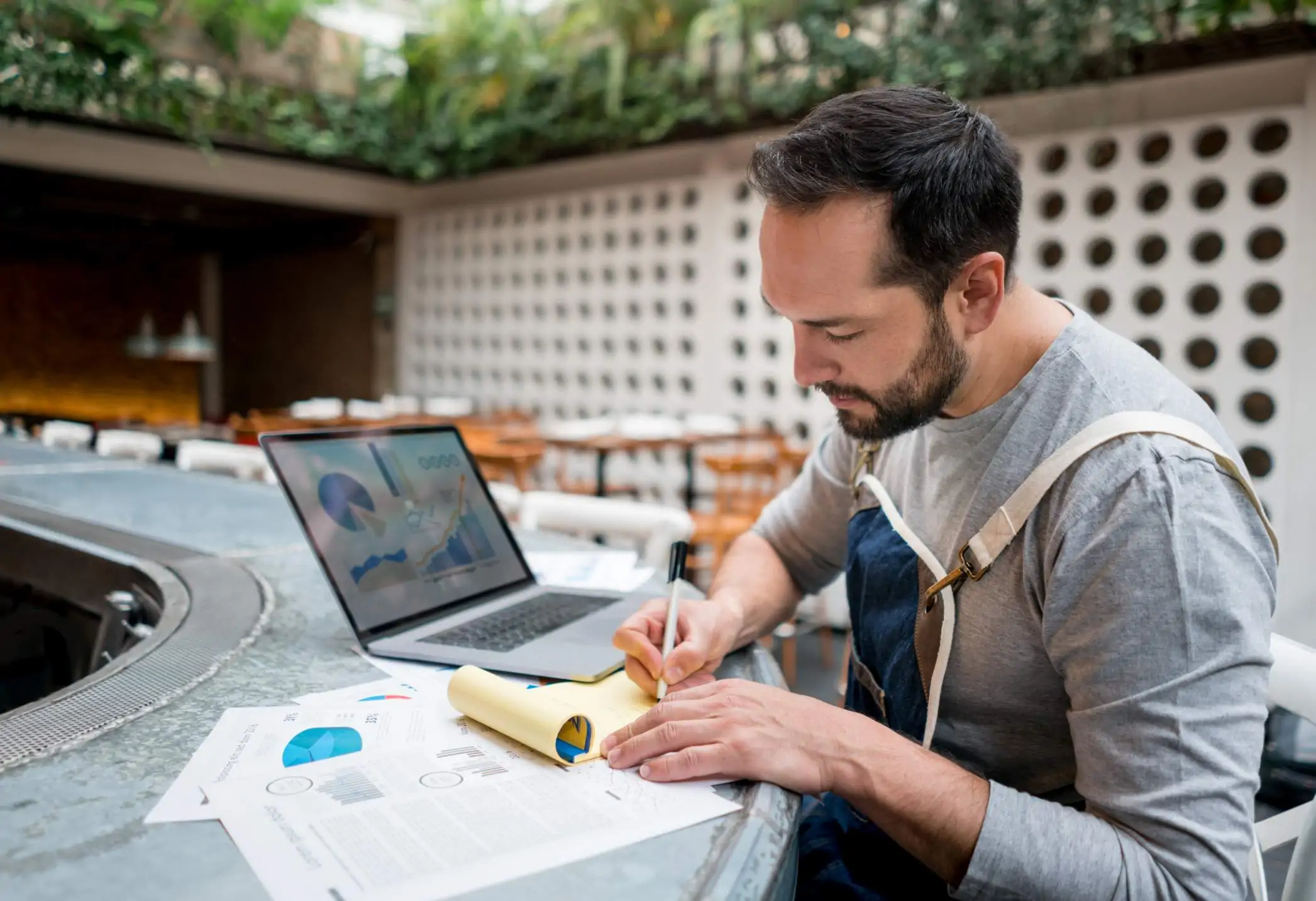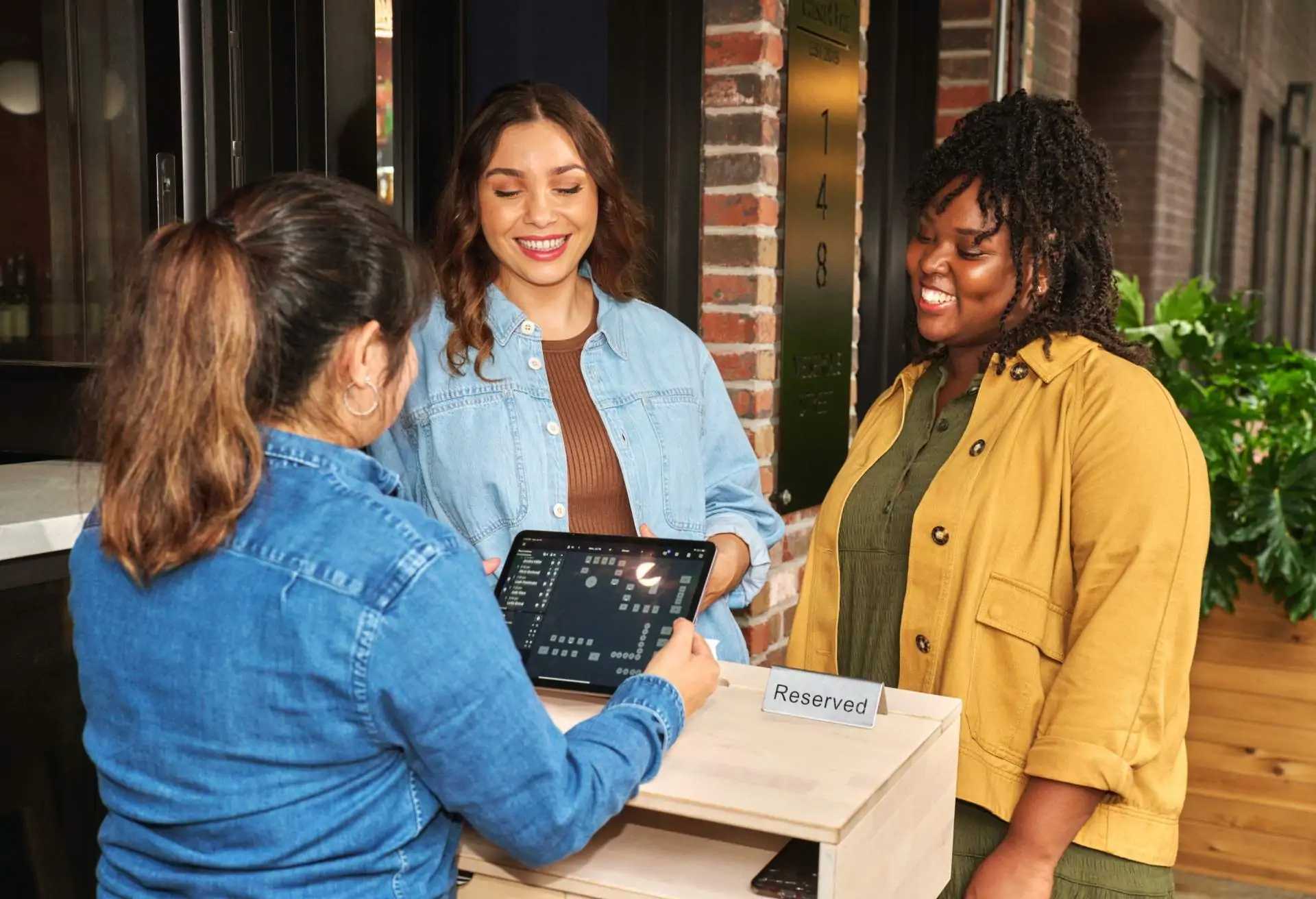Even talented staff can struggle to handle the daily demands of overseeing a busy restaurant without proper guidance. That’s why having a solid restaurant management training program is so important for owners and operators looking to build a successful team.
A well-structured management training program equips new leaders with essential skills while promoting ongoing development. Here’s how to create a training regimen that transforms promising employees into standout managers.
Using the right leadership skills
Great restaurant managers inspire their teams and set the tone for the entire operation. Focus your restaurant manager training on these key leadership abilities:
Communication
Practice delivering feedback and handling tough conversations. Role-play scenarios like addressing performance issues or mediating staff conflicts. This preparation will help you navigate for the real thing and handle future situations with the tact required.
Team building
Hold workshops on building collaboration and recognizing individual strengths. Try team exercises that simulate busy shifts to build problem-solving skills. Doing so creates a more cohesive, efficient team that can handle high-pressure situations. For instance, set up a mock kitchen line and have managers work together to prepare and plate a multi-course meal within a tight timeframe, encouraging communication and quick thinking.
Conflict resolution
Teach strategies for diffusing tense situations with both staff and guests. Go over techniques for finding win-win solutions when disagreements arise. For example, when a guest complains about a long wait for their entree, train managers to acknowledge the issue and offer a sincere apology, explaining the delay if possible and providing a complimentary appetizer or drink while they wait.
Delegation
Cover how to match a task to the team member’s abilities and provide the right level of support. Have trainees create mock schedules and task lists, then discuss their reasoning. Let’s say a new server shows promise but struggles with wine service. A good manager might pair them with an experienced sommelier for slower shifts, so they learn and build confidence before handling busier nights solo.
A seamless, efficient operations management
Running a smooth service at your restaurant requires hands-on practice with core systems. From inventory management to staff scheduling, managers need to master the operational backbone that keeps the business running at a high standard.
Inventory control
Understand how to keep track of your inventory, place orders efficiently, and minimize waste. Aim to buy the right amount of goods based on your reservation data. This will help you avoid purchasing more than you need.
Staff scheduling
Learn to balance business needs with employee preferences. Create weekly schedules that account for seasonal changes and special events. You might create a mock schedule for a holiday weekend, balancing the need for extra staff during peak hours with requests for time off. An exercise like this helps managers learn to anticipate rushes, assign the right mix of experienced and newer staff, and keep the team happy.
A good table management system can be invaluable for this process. For example, OpenTable’s offers analytics and reporting on key metrics like table turn times and reservation patterns. The data allows restaurant owners to make smarter decisions about staffing levels, helping to ensure you have the right number of employees scheduled for both slow and busy periods.
Health and safety
Go over food safety regulations and proper handling procedures. Consider adding certification courses like ServSafe to the training mix so you can confirm all managers have a standardized, comprehensive understanding of food safety practices and can effectively train their staff.
Equipment maintenance
Do hands-on demos of basic troubleshooting and upkeep for key restaurant equipment. Teach your team when to handle issues in-house versus calling in professionals. An example of this might be teaching managers how to properly clean and calibrate the ice machine, but emphasizing that they should call a technician for any refrigeration system repairs to avoid potential food safety risks.

Having financial know-how
Understanding the numbers plays a central role in a restaurant’s success. After all, you need to know what’s coming in and going out so you don’t spend unnecessary money or make the wrong financial decisions. Calculate everything, from incomings and outgoings to profit margins.
Profit and loss analysis
Use real-world examples to teach reading P&L statements and spot areas to improve. Have trainees analyze sample reports and suggest action steps so they can apply these skills to actual real-life scenarios with confidence and accuracy.
Budgeting
Practice developing department budgets, forecasting expenses, and tracking actual spending. Show how to make smart choices when resources are tight. Have your trainees allocate a limited budget between marketing, staff training, and equipment upgrades and ask them to justify their decision-making process.
Cost control
Focus on strategies for managing food, beverage, and labor costs. Work with your team to see if there’s a way to reduce food costs by 2% without sacrificing quality, perhaps by adjusting portion sizes or finding alternative suppliers.
Forecasting
Using past data and market trends, go over how to project future needs. Have trainees create sales and labor forecasts for different scenarios. For example, ask them to predict staffing needs for an upcoming holiday weekend, based on last year’s data and current economic conditions.
Making the most of the guest experience
Exceptional service starts at the top. Managers set the tone for how guests are treated from the moment they walk in until they leave. Focusing on certain aspects of the guest experience creates an environment where outstanding service is the norm, not the exception.
Complaint handling
Role-play tricky guest situations to build confidence. Teach the LAST method (Listen, Apologize, Solve, Thank) for turning negatives into positives. You could have trainees practice handling a scenario where a guest’s steak is overcooked, walking through each step of the LAST method to resolve the issue.
Service standards
Develop consistent protocols for all guest touchpoints, from greetings to follow-ups. Create checklists for different service roles. You might create a standard greeting script for hosts, assuring every guest receives a warm welcome, and train servers on a step-by-step approach to taking orders and checking on tables.
Feedback utilization
Show how to gather and act on guest input to improve overall performance. Use OpenTable’s guest relationship tools for tracking preferences and personalizing visits. Note a guest’s favorite wine, then surprise them with a complimentary glass on their next visit.
Similarly, pay attention to OpenTable guest reviews to glean additional insights. Train managers to discuss areas for growth with the team. While it’s crucial to address constructive feedback, don’t overlook the importance of sharing positive guest comments as well.
Menu management
While chefs often lead when it comes to menu management, managers should grasp the core concepts that make it all tick.
Menu engineering
Cover menu psychology basics, like item placement and pricing strategy. Practice analyzing performance data to decide which dishes to keep, change, or cut. Have trainees redesign a sample menu, placing high-profit items in prime spots and removing underperforming dishes.
Food and drink pairings
Do tastings to develop managers’ palates and boost upselling confidence. Go over pairing principles for different cuisines and occasions. You could organize a wine and cheese pairing session, teaching managers how to suggest the perfect wine to complement various dishes.
Seasonal planning
Walk through working with the kitchen on menu updates, factoring in ingredient availability and guest preferences. Create a mock scenario where managers must plan a fall menu update, considering factors like produce seasonality, customer favorites, and profit margins.
Nailing marketing and promotion
Managers have a role to play in driving business beyond the typical day-to-day operations. They’re often the face of the restaurant in the community and online, making their marketing and promotional skills central to success.
Social media
Teach platform-specific best practices and content creation tips across social media. Show how to engage followers and handle online feedback. For example, have trainees create a week’s worth of Instagram posts, including appetizing food photos, behind-the-scenes glimpses of kitchen prep, and staff spotlights. Practice responding to both positive and negative comments in a brand-appropriate voice.
Local marketing
Cover community partnership strategies and make use of word-of-mouth. Brainstorm creative ways to stand out in your area. You might challenge managers to develop a cross-promotion plan with a nearby business, such as offering a discount to theatergoers who show their ticket stubs or partnering with a local brewery for a special tasting event.
Loyalty programs
If you offer a loyalty program, make sure the team knows how to promote it effectively and use data to encourage repeat visits. Set up a mock loyalty program and have trainees analyze member data to create targeted promotions. For instance, they could identify guests who haven’t visited in three months and craft a “We miss you” email campaign with a special offer to bring them back in.
Building your program
With the primary topics mapped out, it’s time to structure your restaurant leadership training for maximum impact. A well-designed program combines various learning methods to cater to different styles and reinforce key concepts.
Mix it up
Blend classroom learning, hands-on practice, and self-study materials. One way to do this could be to follow up on reading material about inventory management with a hands-on inventory-taking exercise.
Get real
Engage employees by having them share actual restaurant scenarios they’ve faced where a challenge needed to be solved, like handling a sudden rush during a local event. Have trainees discuss these real issues together. Doing so will help them feel more at ease when this happens in real life and allow them to learn from each other.
Pair up
Match new managers with experienced mentors for ongoing guidance. Set up regular check-ins and provide conversation starters to keep the relationship productive.
Tech it out
Use training modules and simulations from your tech partners to streamline learning. If you’re an OpenTable customer, consider registering new staff for free courses with OpenTable Academy. Have them practice using the reservation system with mock bookings and guest profiles so they know what to do when the real action begins.
Keep growing
Offer workshops and refresher courses to introduce new trends. One idea might be to bring in a social media expert to teach the latest Instagram marketing techniques. This way, your staff have a heads-up on best practices when it comes to promoting the restaurant online.
Test it
Do hands-on evaluations throughout training regularly. Have trainees run a mock service, handling everything from staff briefing to closing procedures to see how well they apply what they’ve learned and identify any areas that need further improvement or support.
How to measure success
Tracking the impact of your management training program is important for ongoing improvement. Here are the metrics to look out for when it comes to gauging your efforts’ effectiveness:
- Manager retention rates
- Staff satisfaction scores
- Guest feedback trends
- Key financial indicators (sales growth, cost improvements)
- Training completion rates and assessment scores
Compare the numbers before and after implementation to quantify results to give you a clear picture. Regularly ask trainees and their supervisors for feedback to fine-tune the curriculum.
Always improving
Great training programs evolve, so regularly update your materials and methods based on:
- Trainee and trainer feedback. Provides direct insights on program effectiveness and areas for improvement
- Industry regulation changes. Shows that your training stays compliant and current with legal requirements
- New tech or systems in your restaurant. Keeps managers up-to-date with the tools they’ll use daily
- Performance data and skill gap findings. Highlights areas where additional training may be needed to boost overall efficiency
Investing in management training will help set your restaurant up for long-term wins. Well-trained leaders build positive work environments while delivering standout guest experiences and improving the bottom line.
Restaurant management training designed to win
The goal is to create confident leaders who can roll with the restaurant industry’s constant changes. Providing a strong skill foundation and encouraging ongoing learning will help develop managers so they’re ready to meet today’s needs and lead your restaurant into the future.
With the right skills and tools like OpenTable, your managers will be able to tackle any challenge that comes their way.



